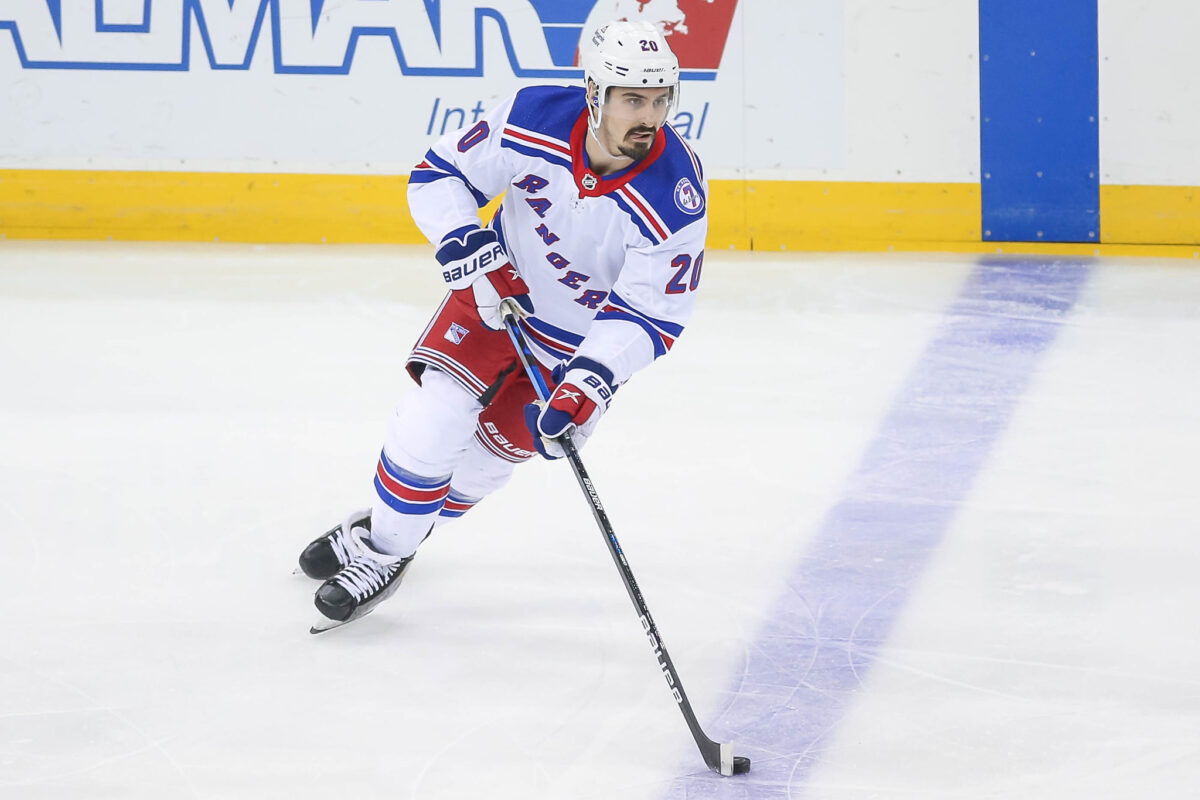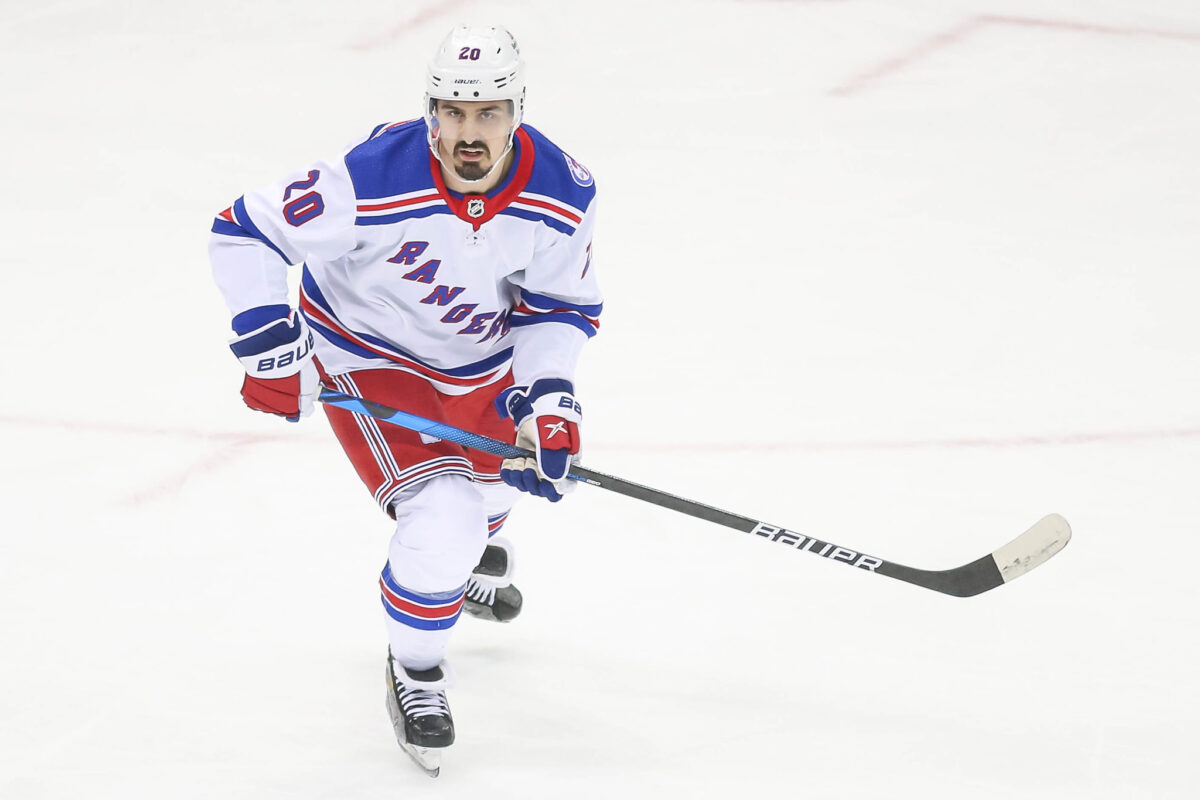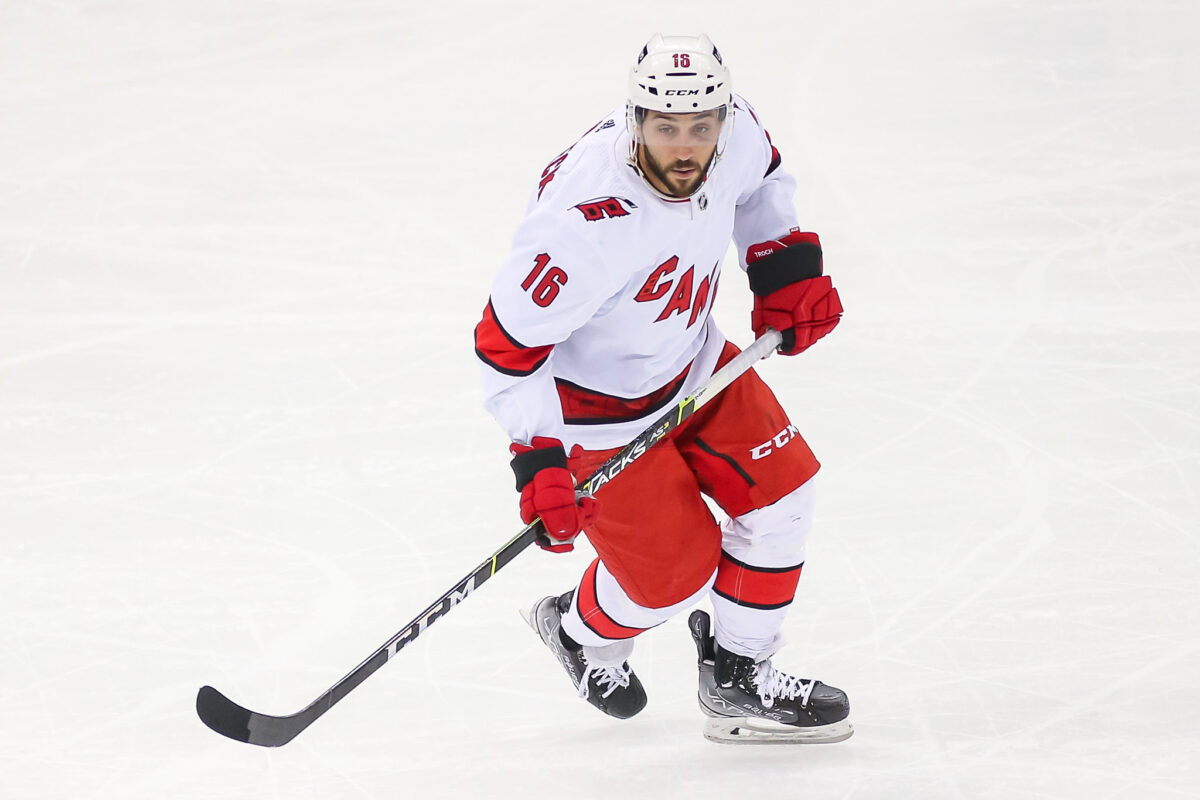After New York Rangers forward Chris Kreider nearly doubled his previous best output with a 52-goal effort in 2021-22, his name consistently made it onto numerous preseason prediction lists for 2022-23 – though not for the right reasons.
The Blueshirts power forward was a very popular pick as a top regression candidate for this season, his startling goal total seen by many as an anomaly that he not only wouldn’t duplicate, but would never approach again. Quietly, though, Kreider is not far off the goal-scoring pace he was on last season – and the potential exists for him to meet and perhaps exceed the offensive tempo which resulted in his career performance going forward.

Though he got off to a slow start this season with two goals in eight games that prompted some smarmy social media takes (“has anyone tried unplugging Chris Kreider and plugging him back in?” and the like), the 31-year-old has picked it up with 12 goals in his last 22. His total of 14 goals in 30 games compares favorably to this point last season, when Kreider scored 18 times in his first 30 contests, and has him on pace to reach the 40-goal mark.
The key difference between last season and this one might not be Kreider’s fast start in 2021-22 – he scored in each of his first three games and 15 of his first 19 then – or the “stars aligning” or whatever other cliches are often used to describe how a player achieved a career season. Rather, what’s not the same from now to then is the Rangers’ power play.
Rangers’ Power Play Not Nearly as Potent as It Was Last Season
The comparison is stark: Kreider scored 11 of his 18 goals through 30 games last season with the man advantage, playing a critical role on a formidable Rangers first power-play unit. Of his 14 goals this season, Kreider has scored only four of them with a manpower advantage.
Not surprisingly, the Rangers had a better power play last season. Through 30 games of 2021-22, they were 22 for 86 for a 25.6 success rate, essentially the same as their 25.2 season percentage that ended up being good for fourth in the NHL.

The Blueshirts also scored 22 power-play goals through 30 games this season, but needed 97 opportunities to do it, a 22.7 success rate that ranks 16th in the league. Kreider was responsible for exactly half of his team’s power-play goals at this point last season, and 26 of the club’s total of 55 – nearly half – for all of 2021-22. By comparison, Kreider was responsible for just 18 percent of the Rangers’ power-play tallies 30 games into this season.
So what does that mean for Kreider going forward? Are the Rangers not as good with the man advantage in 2022-23, leading to Kreider’s depressed power-play goal total, or is his performance on the PP a primary reason the Blueshirts haven’t scored as much in those situations as they did last season?
The answer might not be as simple as picking one scenario or the other. It’s of course possible that Kreider did get some “puck luck” (there’s one of those cliches) last season, with his impeccable ability to position himself in front of the net for tip-ins and deflections leading to a disproportionate rate of success with the Rangers up at least a man. However, it might also just be a slow start for the highly-talented Blueshirts power play that will begin to even out as the season goes on.
The personnel on the Rangers’ top power-play unit is unchanged from last season other than newcomer Vincent Trocheck replacing Ryan Strome in the group that includes Kreider, Artemi Panarin, Mika Zibanejad and Adam Fox. Trocheck, who’s been effective but is still feeling his way with a new team, has matched his power-play goal total of last season with six. He tipped one in with the man advantage in a 4-3 overtime victory over the New Jersey Devils on Dec. 12, suggesting that he and Kreider play a similar style on the power play and Trocheck might be taking some of the chances from in front that Kreider got almost exclusively last season.
Kreider Might Be Getting Ready for Another Goal Burst
Yet it seems more likely that in the long run, another net-front presence would help Kreider’s power-play production, with opponents forced to defend against two players looking for tips and rebounds in close. Puck luck has also victimized the Rangers so far this season, with the team hitting a bevy of posts and missing on other close opportunities.
Related: Rangers Might Have Finally Found Way Forward for Lafreniere & Kakko
That seems to indicate there’s room for Kreider’s production to increase, and that one of his characteristic goal binges might be imminent. The big guy is also contending with having to develop chemistry with his new center Trocheck, which has been uneven so far, a result of Kreider being separated from long-time linemate Zibanejad four games ago.

Last season, however, made clear the fact that Kreider has learned to use his versatility to consistently generate scoring chances in a multitude of ways regardless of who he’s playing with, as 23 of his goals came at even strength, 26 on the power play and three short-handed. So far this season, he’s been doing it at 5-on-5, with nine tallies coming at even strength and one short-handed to go with his four power-play goals. His Corsi for percentage is also at a career high of 61.0, and he has a gaudy goals-for percentage of 60.7.
Kreider was among the biggest stories on the Rangers as they jumped out to a 19-7-4 start last season en route to a 52-24-6 record. Their first 30 games of 2022-23 haven’t been nearly as successful, with a 15-10-5 mark at the same point. Despite little fanfare, though, Kreider isn’t far off his blistering pace of 2021-22. With the Rangers putting together a four-game winning streak, it’s possible Kreider and his team aren’t too far away from rediscovering last season’s high levels together.